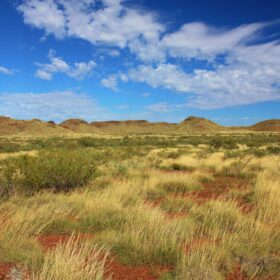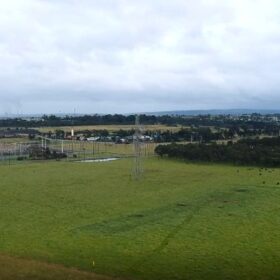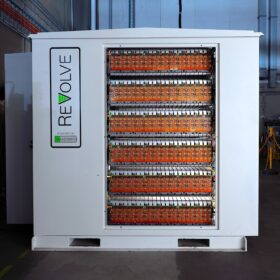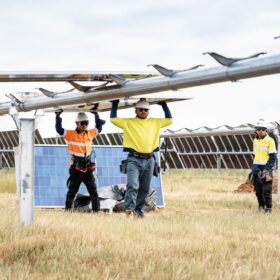Sydney-headquartered AI-powered predictive modelling platform for utility networks developer Neara has announced a strategic partnership with United States-headquartered utility infrastructure assessment provider Omose to help utilities better assess risk, improve data accuracy, and strengthen power grids.
This collaboration will enable utilities like CenterPoint Energy to prioritise asset upgrades with greater precision and efficiency.
By combining Osmose’s deep expertise in field data collection, structural analysis, and restoration solutions with Neara’s advanced AI modelling, the partnership will address longstanding data quality challenges that often limit effective decision-making.
Many utilities struggle with incomplete or outdated network data, leading to premature replacements or missed opportunities for cost-effective reinforcement. This joint solution enhances data accuracy, helping utilities optimise restoration efforts, reduce costs, and improve resiliency.
“By integrating Neara’s AI-driven modelling with our industry-leading field services, we’re giving utilities a powerful tool to make smarter, more data-driven decisions,” said Mike Adams, Chief Executive Officer of Osmose.
“Accurate asset data is the foundation for a resilient grid, and this partnership provides the precision needed to maximise reliability and performance.”
The collaboration will focus on several key challenges in utility infrastructure management:
-
Enhancing data accuracy – Osmose’s field teams collect and verify asset conditions on-site, ensuring utilities have the most reliable and precise structural data available. Neara’s AI platform then processes and refines this data, automatically correcting and enhancing GIS records. By combining Osmose’s hands-on expertise with Neara’s AI-driven insights, utilities gain a clearer and more actionable understanding of their network.
-
Improving risk-based decision-making – Osmose’s structural analysis and degradation models provide deep insights into asset condition and performance. Neara enhances these insights by applying predictive analytics, helping utilities quantify risk and prioritise action. Together, they enable utilities to determine which assets require immediate restoration, which can be reinforced or upgraded, and which should be replaced—eliminating costly guesswork.
-
Optimising restoration strategies – Osmose’s field-verified assessments allow utilities to target restoration and reinforcement efforts with precision. Neara’s modelling further refines this process by force-ranking risk-adjusted priorities across the network. This ensures that utilities make the most cost-effective and impactful restoration decisions, strengthening infrastructure while minimising unnecessary replacements.
“Restoration, reinforcement, and structure replacement all play key roles in strengthening distribution infrastructure,” said Jack Curtis, Chief Commercial Officer at Neara.
“But the most effective decision-making starts with clean, accurate data. By integrating Osmose’s field expertise into our platform, we’re helping utilities like CenterPoint Energy improve resiliency while optimising costs.”
USA-headquartered CenterPoint Energy is already using the partnership’s tools to enhance its storm preparedness and improve network reliability.
“At CenterPoint Energy, we are focused every day on building the most resilient coastal grid in the nation and increasing the resiliency of the communities we are privileged to serve,” said Eric Easton, VP of Grid Transformation at CenterPoint Energy.
“As we work to leverage technology to deliver better outcomes for our customers, we’re continuing to enhance our advanced modeling capabilities, which includes collaborating with cutting-edge technology providers like Neara and Osmose to leverage data from both site-specific field analysis and LiDAR-based modeling to optimise the accuracy of individual asset analysis as well as the efficiency of our whole system modelling.”
This partnership helps utilities move beyond traditional inspection cycles and embrace a more proactive, data-driven approach. The benefits include:
-
Up to 70% cost savings by reinforcing rather than replacing high-risk assets;
-
Up to 80% faster restoration, minimising disruptions and improving reliability; and
-
25% more accurate asset prioritisation, ensuring the most critical upgrades happen first
By continuously updating asset data through field inspections and AI-driven modelling, utilities can stay ahead of potential failures and ensure their networks are stronger, safer, and more reliable.






By submitting this form you agree to pv magazine using your data for the purposes of publishing your comment.
Your personal data will only be disclosed or otherwise transmitted to third parties for the purposes of spam filtering or if this is necessary for technical maintenance of the website. Any other transfer to third parties will not take place unless this is justified on the basis of applicable data protection regulations or if pv magazine is legally obliged to do so.
You may revoke this consent at any time with effect for the future, in which case your personal data will be deleted immediately. Otherwise, your data will be deleted if pv magazine has processed your request or the purpose of data storage is fulfilled.
Further information on data privacy can be found in our Data Protection Policy.